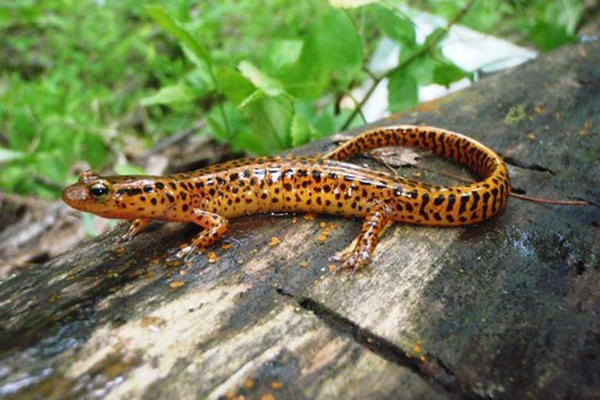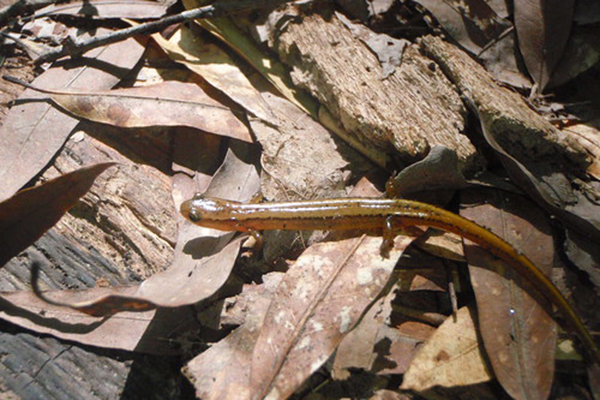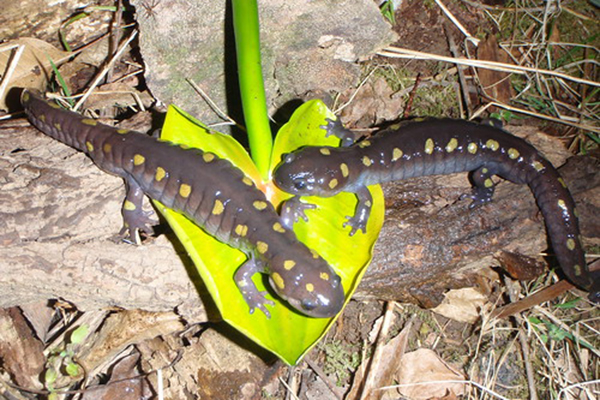Salamanders and Newts
Salamanders

Salamanders thrive in a range of habitats. Some live in water, some on land, and some spend time both in water and on land. Many salamanders are born in water with gills, and as they grow, they develop lungs and become terrestrial or land dwelling. Some species keep their gills throughout their lives. Salamanders can breathe through their skin and, in the case of lung-less salamanders, through the membrane of their mouth. They need moisture to survive and are typically found in wet or damp environments. Salamanders have clawless bodies with a smooth and moist skin, a long tail, and no scales. They can't hear sounds but can sense vibrations in the ground. Their sight is well-developed, and they use their tongue to both smell and taste. Salamanders are active year-round and shed their skin regularly, except during cold weather when they don't shed at all. They prefer cool and moist environments and can often be found under rocks or logs.
Newts

In Montgomery County, the Eastern newt showcases a truly remarkable life cycle. It all begins in the water, where they start their journey as larvae, undergoing an incredible transformation as they mature. The next stage, the vibrant red eft stage, is particularly enchanting as their appearance becomes even more brilliant, marked by a striking red coloration. During this phase, they embark on a terrestrial, land-based adventure, exploring the land for a period ranging from one to three years.
Following their terrestrial escapade, Eastern newts return to their aquatic habitat as adults. This life cycle variation provides a mesmerizing insight into their adaptability, as some individuals skip the red eft stage entirely, remaining fully aquatic from their larval form to adulthood. A crucial aspect of a newt's life revolves around their diverse diet, which includes leeches, worms, mollusks, crustaceans, frog eggs, insects, and juvenile amphibians. Their dietary preferences make them valuable contributors to the ecological balance of their habitats.
Pictures of Salamanders
 Dusky Salamander
Dusky Salamander
 Eastern Mud Salamander
Eastern Mud Salamander
 Long Tailed Salamander
Long Tailed Salamander
 Marbled Salamander
Marbled Salamander
 Northern Spring Salamander
Northern Spring Salamander
 Northern Two Lined Salamander
Northern Two Lined Salamander
 Red Salamander
Red Salamander
 Spotted Salamander
Spotted Salamander